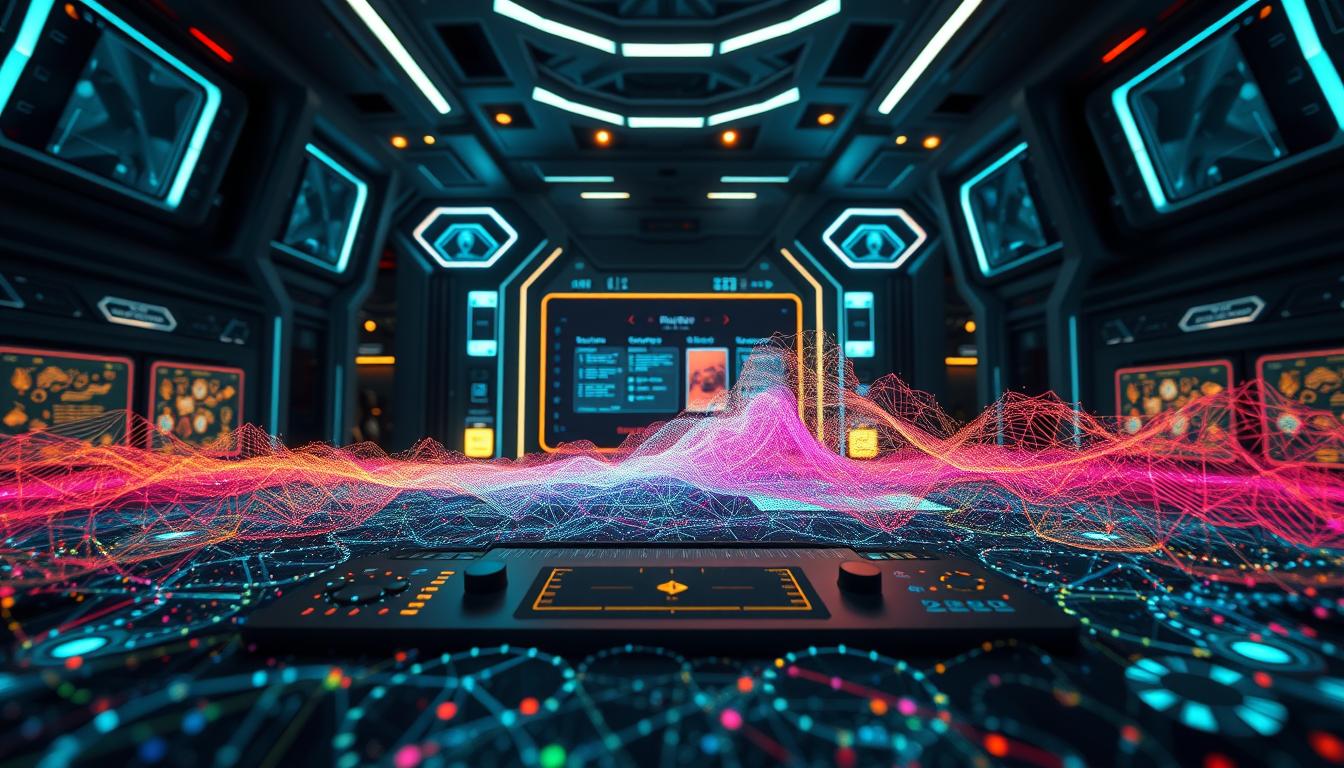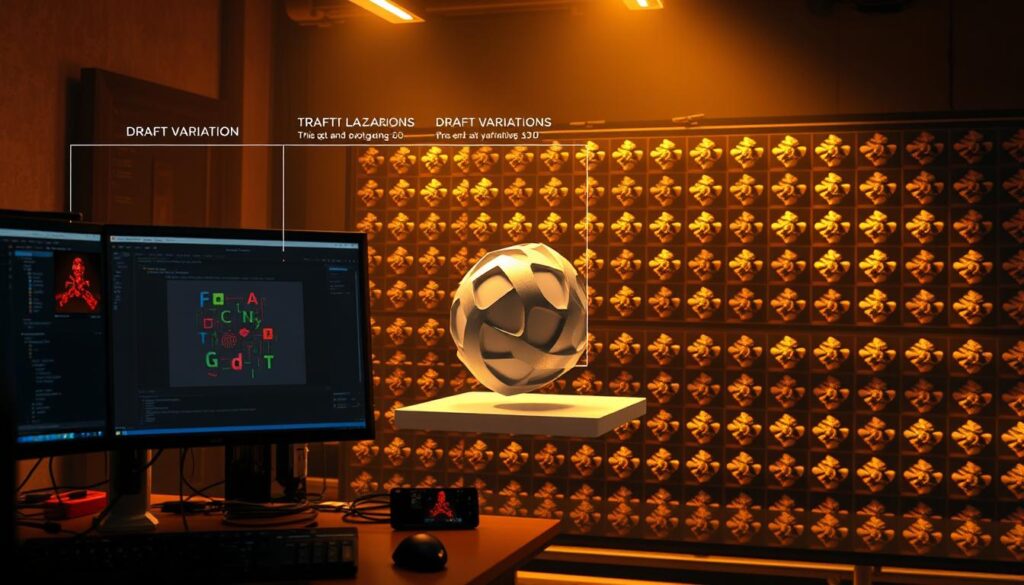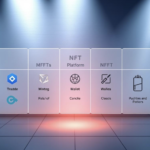Now Reading: Generative Art NFT Algorithmic Trait Rarity Calculation Explained
- 01
Generative Art NFT Algorithmic Trait Rarity Calculation Explained
Generative Art NFT Algorithmic Trait Rarity Calculation Explained

Modern digital collectibles rely on advanced systems to produce thousands of distinct visual pieces. Projects like Bored Ape Yacht Club demonstrate how combining layered artwork with strategic design rules creates value through scarcity and variety. This method allows creators to build cohesive series where no two items look identical.
At its core, the process uses stacked visual elements divided into categories like backgrounds, body types, and accessories. Each category contains multiple options with predefined appearance rates. Common elements might appear in 70% of outputs, while rare variations could show up less than 1% of the time.
Developers employ weighted randomization to ensure both diversity and controlled scarcity. This balance keeps common features familiar enough to maintain brand identity while making some combinations exceptionally sought-after. The system prevents visual clashes, ensuring every output remains aesthetically consistent despite its uniqueness.
Key Takeaways
- Layered design systems enable mass production of unique digital collectibles
- Strategic rarity settings create natural scarcity hierarchies within collections
- Weighted randomization maintains brand consistency across thousands of variations
- Visual coherence algorithms prevent mismatched element combinations
- Successful projects balance common traits with ultra-rare features
Introduction to Generative Art NFT Collections
Digital creators now leverage code-powered systems to craft visually distinct pieces at scale. These systems merge artistic vision with computational precision, allowing for endless permutations while preserving a unified style. Projects like Art Blocks showcase how programmed rules can transform basic components into complex, one-of-a-kind outputs.
What Is Generative Art NFT?
This approach uses algorithms to assemble visual elements like colors, shapes, and patterns. Artists define parameters, and the software generates unique combinations automatically. For example, a character design might pull from hundreds of hairstyles, outfits, and accessories—each with controlled appearance rates.
Historical Context and Modern Applications
The roots of this method trace back to 1960s computer experiments, where artists first explored code-driven visuals. Today, blockchain technology enables verifiable ownership of these digital works through NFT ecosystems. Modern tools allow creators to:
- Produce thousands of cohesive yet distinct images
- Adjust scarcity levels for specific visual features
- Ensure compatibility between layered components
Platforms now integrate smart contracts to automate metadata assignment and ownership tracking. This evolution has opened new possibilities for artists seeking to balance creativity with scalability in digital markets.
Understanding generative art NFT algorithmic trait rarity calculation distribution analysis
Creating unique digital assets requires meticulous planning of visual components and their occurrence rates. Designers build these systems using stacked elements that combine to form complete characters or scenes. Each piece starts with foundational features and adds details through carefully ordered steps.

Key Concepts: Visual Building Blocks
Every character begins with base features like body shape and facial structure. Additional elements such as hairstyles, eyewear, and jewelry overlay these foundations in specific sequences. This layer ordering ensures hats don’t clip through hairstyles and necklaces sit correctly on clothing.
Design teams assign numerical values to control how often specific details appear. Common options like basic t-shirts might have high weights for frequent use. Unusual combinations—like metallic-colored eyes paired with vintage headpieces—receive low weights to limit their appearance.
Controlled Occurrence Rates
Here’s how weighting works in practice:
- A standard eye color might appear in 45% of pieces
- Unique patterned clothing could show in 5%
- Special accessories might only surface in 1% of outputs
This method maintains visual harmony while creating natural demand for uncommon combinations. Developers program rules to prevent mismatched pairings, ensuring each generated piece meets quality standards. The system’s mathematical precision allows creators to balance familiarity with surprise across entire collections.
Step-by-Step Guide to Building Your Generative Art Algorithm
Constructing a digital artwork system requires precise organization of visual components and code-driven assembly rules. This process transforms individual design elements into cohesive outputs through structured workflows.

Preparing Art Layers and Defining Traits
Start by organizing your base layer and subsequent elements in fixed sequence. Example order:
- Background
- Body shapes
- Facial features
- Accessories
Artists create each variation as separate files with identical dimensions. File names follow patterns like “clothing—denim-jacket-#5.png” where:
- First segment specifies layer type
- Middle describes the trait
- End shows rarity weight
Developing the Code for Randomized Generation
Programmers use JavaScript frameworks to combine layers based on predefined rules. The algorithm follows this flow:
- Load assets from designated folders
- Apply selection weights from filenames
- Stack images using specified layer order
- Save unique combinations
Weighted randomization ensures common traits appear frequently while rare elements stay exclusive. Test batches reveal visual conflicts like overlapping jewelry before final deployment.
Creating and Organizing Rarity Tables for Trait Distribution
Spreadsheet mastery forms the backbone of precise digital asset management. These tools let creators map visual features to exact appearance rates, ensuring every element aligns with project goals. A well-structured table acts as both blueprint and quality control system.

Using Spreadsheets for Trait Percentage Management
Most teams use three-column layouts for clarity:
- Reference numbers for quick identification
- Descriptive names that appear in metadata
- Percentage values dictating how often traits appear
For example, in a pants category, jeans might occupy 20% of a collection, while parachute pants could appear 1% of the time. At 10,000 total pieces, this means approximately 100 outputs showcase the rare design. Some creators push limits with 0.1% rates for just 10 appearances.
Advanced setups use formulas to auto-calculate totals, preventing errors. Conditional formatting highlights overused or underused categories. Real-time collaboration features make Google Sheets a powerful tool for teams adjusting parameters during development.
Seasoned designers layer rarity tiers:
- Common (70-85% occurrence)
- Uncommon (10-25%)
- Legendary (<1%)
This structure creates natural value hierarchies while keeping common elements familiar. Documentation fields track dependencies, like ensuring striped shirts never pair with polka-dot hats unless intended.
Implementing Rules and Weights in NFT Generation
Smart rule systems transform basic components into cohesive digital collections. These frameworks prevent mismatched pairings while allowing creative expression. For example, a winged helmet might automatically disable bulky hairstyles to avoid visual clipping.
Writing Conditional Logic for Trait Combinations
Code-based restrictions maintain aesthetic harmony. Designers use “if-then” statements to manage conflicts:
- If headwear requires space, hairstyles adjust automatically
- Patterned shirts might disable similarly busy backgrounds
- Metallic accessories trigger matching jewelry textures
Developers often group traits using keywords instead of individual files. A turtleneck shirt could pair with glasses by checking for both “clothing” and “neckline” attributes. This approach reduces code complexity while maintaining flexibility.
Managing Rare and Common Elements
Weight systems balance familiarity with excitement. Common traits like basic t-shirts form 60-80% of collections, creating brand recognition. Rare elements (
Advanced projects use tiered locks to preserve uniqueness. A legendary sword might only appear if:
- No conflicting armor exists
- Background color matches weapon theme
- Character class meets warrior criteria
Fallback systems reroute generation paths when conflicts arise. This ensures complete outputs without manual fixes. For AI-driven projects, these rules become dynamic, adapting to collector preferences over time.
Technical Components and Tools for Generative Art Programming
Developers rely on specialized software ecosystems to craft digital collectibles efficiently. These systems combine creative coding frameworks with blockchain integration tools, enabling artists to focus on design while handling technical complexities behind the scenes.

Essential Libraries and Coding Tools
JavaScript remains the backbone of modern art creation pipelines. Key libraries like p5.js simplify shape generation and event handling, while three.js adds depth through 3D rendering. For projects requiring advanced image manipulation, Fabric.js extends HTML5 Canvas capabilities with layer management and object transformations.
Mathematical foundations drive uniqueness in collections. Developers use Perlin Noise algorithms for organic patterns and weighted randomization to control trait frequency. Tools like JIMP automate batch processing, crucial when generating thousands of high-resolution outputs.
Integrating Smart Contracts and Metadata
Blockchain compatibility requires precise metadata structuring. ERC-721 standards dictate how traits like colors or accessories get recorded on-chain. Platforms often pair JavaScript frameworks with Solidity contracts to automate ownership tracking.
Smart systems prevent metadata bloat by referencing external storage solutions. This approach keeps transaction costs low while ensuring permanent record-keeping. Proper integration ensures each piece in a collection maintains verifiable rarity stats and provenance data.
Optimizing Image Generation and Metadata Integration
Producing vast quantities of unique digital pieces demands smart technical solutions. Developers tackle this challenge by balancing processing power with meticulous data organization. The goal: create thousands of distinct outputs while maintaining consistent quality and accurate records.
Efficient Coding Techniques and Use of Web Workers
Parallel processing transforms how systems handle large-scale projects. Web Workers split tasks across CPU cores, preventing browser freezes during intensive operations. This approach lets artists generate thousands images faster while keeping interfaces responsive for real-time adjustments.
Metadata structures form the backbone of digital ownership tracking. Each piece links to a JSON file containing descriptions, file paths, and unique identifiers. Platforms require specific formats for attributes like color schemes or accessory types to ensure marketplace compatibility.
Tools like HashLips Art Engine automate bulk creation by combining layered designs with randomization rules. Advanced caching stores partial results, enabling quick edits without restarting entire batches. Quality checks run automatically to flag mismatched elements or incorrect rarity stats before final export.
These strategies help creators manage massive collections efficiently. By optimizing both visual output and backend systems, teams deliver polished results faster – a critical advantage in fast-moving digital markets.
FAQ
How do traits affect rarity in digital collectibles?
Traits like backgrounds, hairstyles, or accessories are assigned different weights. Rare combinations—like pixel-style eyes with neon hair—occur less frequently. Proper distribution ensures some elements stand out while others remain common.
Why are layers important in designing characters?
Layers stack visual elements (base body, clothing, etc.) to create unique looks. A base layer might include skin tone, while overlays add details like hats or jewelry. Correct ordering prevents visual clashes between parts.
What tools help manage trait percentages effectively?
Spreadsheets track how often specific features—such as metallic textures or gradient backgrounds—appear. Tools like Excel or Google Sheets calculate probabilities, ensuring no single design dominates the collection.
Can incompatible traits appear together accidentally?
Conditional logic in code blocks mismatched pairs. For example, a “bald” hairstyle might exclude certain headgear. Rules prevent illogical mixes, like a character wearing two hats simultaneously.
Which coding libraries streamline image creation?
Libraries like p5.js or Processing automate combining visual elements. They handle tasks like merging PNG files for eyes, mouths, and accessories into cohesive portraits without manual editing.
How does metadata integration work for large projects?
After generating images, metadata files (JSON format) link traits to blockchain standards like ERC-721. This ties attributes—such as “rare_blue_eyes”—to specific tokens, making details accessible on marketplaces.
What optimizations speed up rendering thousands of files?
Techniques like batch processing and Web Workers parallelize tasks. Compressing layers into spritesheets or using GPU acceleration reduces render times for high-volume projects.













